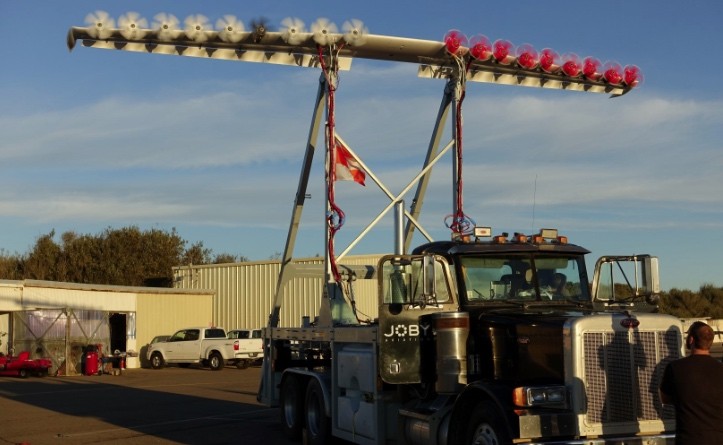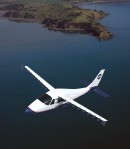While Solar Impulse is moving forward with the world’s first global flight based on solar power, NASA is working on their own plans to “help a significant portion of the aircraft industry transition to electrical propulsion within the next decade”. The Space Administration is currently testing an experimental 18-engine electric concept wing that, if proven successful, will be mounted on future airplanes.
Scientists at NASA Armstrong Flight Research Center have received the Hybrid-Electric Integrated Systems Testbed (HEIST) late last month and have recently started testing it. Dubbed the Leading Edge Asynchronous Propeller Technology (LEAPTech), the project’s purpose is to test the premise that tighter propulsion-airframe integration, made possible with electric power, will deliver improved efficiency and safety, as well as environmental and economic benefits.
NASA claims that over the next several months, researchers will perform ground testing of a 31-foot-span, carbon composite wing section with 18 electric motors powered by lithium iron phosphate batteries. For now, HEIST is mounted on a specially modified truck, as the tests are currently run on ground.
Instead of being installed in a wind tunnel, the wing section will remain attached to load cells on a supporting truss while the vehicle is driven at speeds up to 70 mph across a dry lakebed at Edwards Air Force Base.
Running these tests is just one leg of the project that began last year, as NASA claims the wings will later be mounted on a small X-plane demonstrator proposed under the Agency’s Transformative Aeronautics Concepts program.
Then, sometime in the next couple of years, scientists hope they will mount the wings on an Italian-built Tecnam P2006T whose wings and engines will be taken off. As to the motors, it appears that each is able to function independently at different speeds for optimized performance.
NASA claims that over the next several months, researchers will perform ground testing of a 31-foot-span, carbon composite wing section with 18 electric motors powered by lithium iron phosphate batteries. For now, HEIST is mounted on a specially modified truck, as the tests are currently run on ground.
Instead of being installed in a wind tunnel, the wing section will remain attached to load cells on a supporting truss while the vehicle is driven at speeds up to 70 mph across a dry lakebed at Edwards Air Force Base.
Running these tests is just one leg of the project that began last year, as NASA claims the wings will later be mounted on a small X-plane demonstrator proposed under the Agency’s Transformative Aeronautics Concepts program.
Then, sometime in the next couple of years, scientists hope they will mount the wings on an Italian-built Tecnam P2006T whose wings and engines will be taken off. As to the motors, it appears that each is able to function independently at different speeds for optimized performance.



